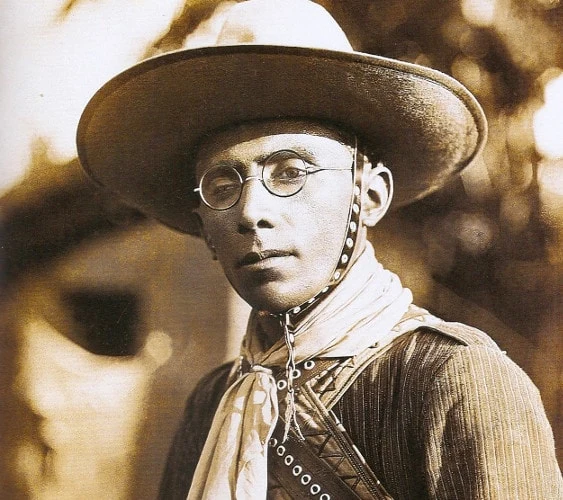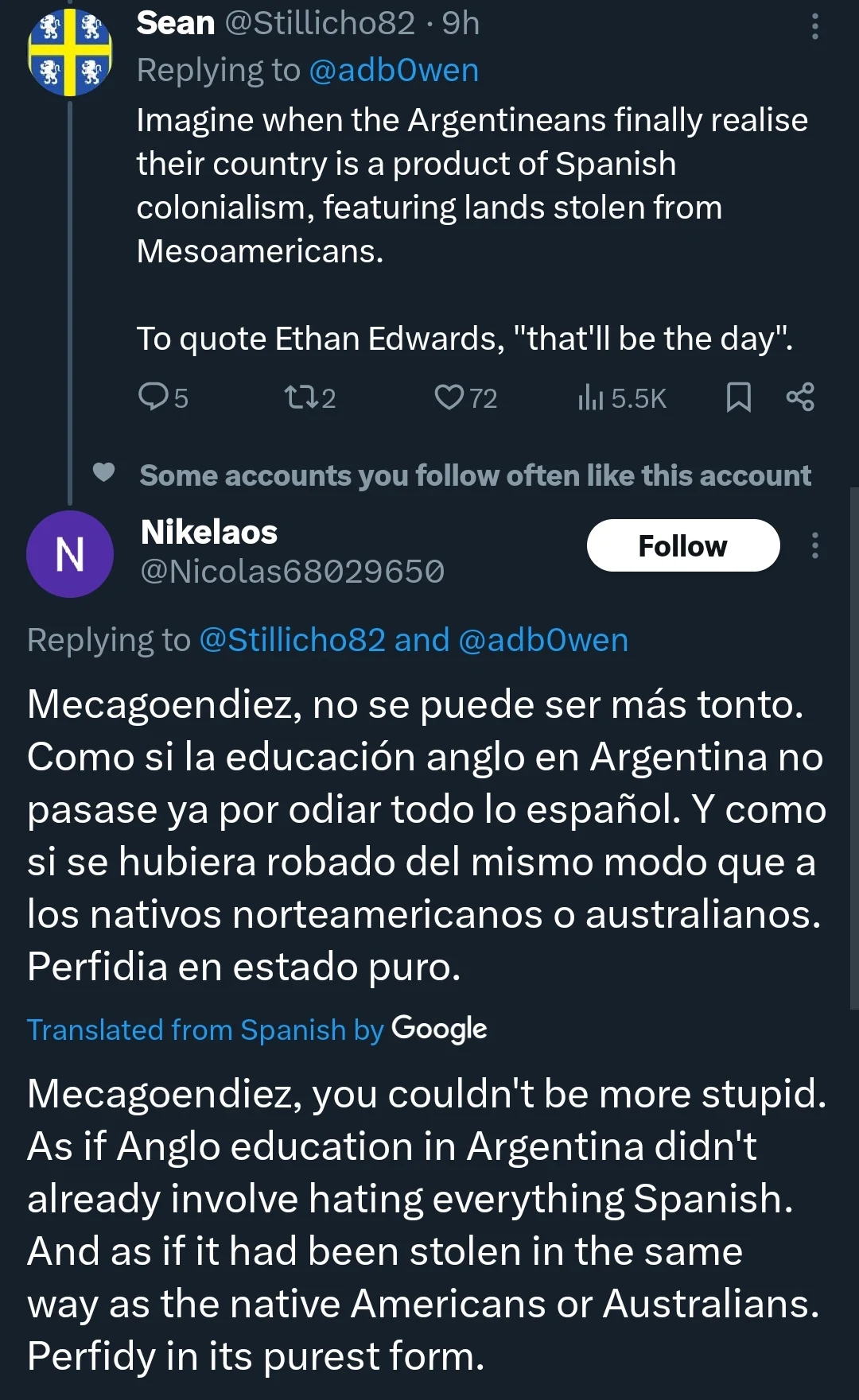- 5
- 18
- 34
- 89
Hi everyone 
Continuing with my LATAM autismus posts  today I'll talk a bit about how Brazil came to have so many japs (around 2 million descendants if we include Hapas which makes it the largest Japanese diaspora in the world, larger than the one in the United States). Speaking for myself I had 2 Co-workers who were of Japanese descent, a former boss of mine and my sister's Godmother is the daughter of Japanese immigrants.
today I'll talk a bit about how Brazil came to have so many japs (around 2 million descendants if we include Hapas which makes it the largest Japanese diaspora in the world, larger than the one in the United States). Speaking for myself I had 2 Co-workers who were of Japanese descent, a former boss of mine and my sister's Godmother is the daughter of Japanese immigrants.
So our story begins in the 19th century. In 1868 the Meiji restoration happens and Japan rapidly modernizes to catch up with the rest of the world. The Japanese population grows to unsustainable levels and unlike Britain, Japan doesn't have (yet) colonies to ship their people. However the government encourages their citizens to migrate. One of the earliest places they go to is the United States, more specifically Hawai. However it turns out 19th/early 20 century burgers are racist as frick and by the early 1900s they start restricting Jap migration. With the 1924 migration act, the Japanese are banned from entering the US.
Which lead us to Latin America. The first LATAM country to establish relations with Japan was Peru  , in 1899 the first 790 immigrants arrived in Puerto Callao near Lima. The Peruvian Japanese community became prosperous and many of you probably know their most famous representative, former President (and for many dictator) Alberto Fujimori, whose presidency was filled with extremely dramatic events.
, in 1899 the first 790 immigrants arrived in Puerto Callao near Lima. The Peruvian Japanese community became prosperous and many of you probably know their most famous representative, former President (and for many dictator) Alberto Fujimori, whose presidency was filled with extremely dramatic events.
But now let's go back to Brazil. In 1871, a year after the end of the Paraguayan War and after having freed thousands of slaves who served in the army, the abolitionist movement gained force with the government of Prime Minister Jose da Silva Paranhos, the Viscount of Rio Branco, presenting a bill which was passed by parliament and signed into law by the Emperor which was the “Lei do Ventre Livre”, which translates as “Free womb Act”, this law made the children of slaves born henceforth that date as free citizens (they would still remain under the tutelage of their parents masters until reaching adulthood under “apprenticeships”). This meant slavery had an expiration date. On the top of that, racism was highly fashionable and according to the 1872 census only 38% of the Brazilian population was white (mostly descendants of Portuguese colonists who arrived en masse during the gold rush of the 1700s), pardos were the largest racial group, and blacks were the third largest. The government decided to take advantage of future abolition and whiten up the country. The first immigrant colonies in Brazil were the German colonies in the Southern States, Rio Grande do Sul and Santa Catarina, however the number of German arrivals was small, so the government promoted italian, portuguese and spanish immigration. In 1888 Slavery was abolished as the Princess Regent (the emperor was sick and following medical treatment in Europe) Isabel signed the Golden Act which was passed almost unanimously by Parliament (one of the few people to vote against it, the Baron of Cotegipe told the princess that doing so she had lost her throne).
Almost 5 million europeans migrated to Brazil between 1870-1940, being settled mostly in São Paulo where the coffee plantations where located, but also in large numbers across the southern states and Rio de Janeiro, in the latter the immigrants were mostly portuguese and urban.
So going back to Japan. The first diplomatic contacts with Japan were made by Brazilian Navy Vice-Admiral Artur Silveira da Mota, the Baron of Jaceguai. He arrived in Tokyo in November 1880, and made the first contacts with Japanese diplomats, however it would take another decade for more to come into fruition.
On November 15th 1889 the Brazilian Emperor, Dom Pedro II was deposed and Brazil became a Republic. In 1890 President Deodoro da Fonseca signed a decree banning Asian and African migration unless with authorization of Congress. In 1892 congress passed a law authorizing the migration of Japanese and Chinese immigrants. In 1895 a trade treaty was singed with Japan and by 1897  a permanent Brazilian diplomatic mission (called legation) was established in Tokyo.
a permanent Brazilian diplomatic mission (called legation) was established in Tokyo.
In 1902, Italy banned the subsidized migration of italian citizens to Brazil. The reason was that in São Paulo, most of the italians employed in the coffee plantations were treated on a similar fashion as the BIPOCs  they were replacing, except they were payed just enough to buy food and a few clothes.
they were replacing, except they were payed just enough to buy food and a few clothes.
The plantations still required a workforce. In 1906 the President of the Imperial Migration Association, Ryo Mizuno visited Brazil and in 1907 an agreement was signed to send 3000 Japanese immigrants, the first 781 arrived at the Santos port (São Paulo state) on June 18th 1908, on board of the Kasato Maru which is the Jap-Brazilian Mayflower.
Reception of the Japs by the public was mixed, on one hand many praised the Nips for being clean, unlike the Europoors who arrived daily 
 , many newspapers on the other hand condemned the bringing of “yellows” who would pollute Brazil and the whitening process. Oliveira Viana, a Brazilian sociologist compared them to sulfur calling them “unsolvable”.
, many newspapers on the other hand condemned the bringing of “yellows” who would pollute Brazil and the whitening process. Oliveira Viana, a Brazilian sociologist compared them to sulfur calling them “unsolvable”.
Most of the first Japs to arrived never learned any Portuguese and they were pretty much exploited at the plantations. Their children, the Nissei weren't much different, 90% of Nissei spoke solely Japanese. However with time many of them became small producers themselves, in 1911 saw the first buying of lands by japs.
Then came the 1920s, as mentioned before in 1924 the Americans banned Asian migration of any sort, so the Nippons began to arrive in larger number in Brazil. Some 190k Immigrants migrated between 1908-1941, around 110k between the 1924-1933 period alone. 

By the 1930s !macacos were getting tired of them. In 1930 Getúlio Vargas became President after a coup, later in 1937 he would establish his dictatorship, the Estado Novo. Vargas was a nationalist and many in his government tried to stop yellow migration. As early as the 20s bills were proposed at congress banning blacks from migrating and limiting Yellows to 5% of migrants at most. Migration was finally limited under Vargas by establishing quotas (except for Portugal  )
)
In 1939 a poll showed that 87% of Jap Brazilians subscribed to Japanese Language newspapers, so a decreed by President Vargas banned them along with radio. Brazilian eugenicists were voicing loud concerns about the Yellow race polluting the Brazilian Nation 
In 1941, months before Pearl Harbor, the Justice Minister, Francisco Campos forbade the entering of 400 Japanese Immigrants of the ground that:
their despicable lifestyle represents a brutal competition with the workers of this country, their bad faith, their selfishness and their bad character makes them an ethnic and cultural tumor located in the wealthiest region of Brazil


In 1942 Brazil declared war to Germany and Japan, so immigrants and descendants of immigrants of said countries were considered enemies of the state. In São Paulo crowds gathered around Japanese Neighborhoods yelling
DEATH TO THE FIFTH COLUMNISTS”
In the countryside Nip farms were attacked and in many cases the Brazilian attackers killed their animals. The Nikkei were banned from driving cars, or trucks or any motor vehicles, the Japanese schools were closed by the government. After Japanese subs sank Brazilian merchant ships 
 the police decided to do a round up at the Jap neighborhood of Liberdade in São Paulo, they woke up everyone and told them they had 12 hours to move
the police decided to do a round up at the Jap neighborhood of Liberdade in São Paulo, they woke up everyone and told them they had 12 hours to move 

On june 10th 1943 some 10k japs living in Santos were forced to abandon their houses within 24 hours and move to the coast. Apparently the government ran around 31 concentration camps (similar to US internment camps) to imprison Japs and Krauts. During Carnival, emperor Hirohito was mocked which made the japs seethe 
Jap students who contributed to the war effort in agricultural colonies were exposed in sorts of human zoos.
The war ended in 1945 but not the Brazilian xenophobia, in 1946 an amendment was proposed into the constitution being drafted which would have banned the entering of all people of the Japanese race, the article was defeated by a single vote.
By the 1950s things had changed, the Nikkei became more integrated in society forming a stable middle class. Today they're definitely over represented among engineering and science majors. Among their contributions sushi became very popular in Brazil, not to mention Hapa celebrities like Sabrina Sato. Most of the young Nikkei are mixed, after the 1960s and 70s mixed marriages became more common along with integration and none of them speaks Japanese, they're pretty much Brazilian through and though and interesting they handle “le generational trauma” better than Asian Americans.
Some pics of the immigrants from the good old days.
A public warning, it says “it is forbidden to speak Japanese, Italian or German in public. These were made during WW2.
@Kongvann I forgot to notify as an effortpost
This video talks about the immigration, but what's funny is the seething in the comments section from people saying “BUT WHAT ABOUT THE BLACKS AND THE FORMER SLAVES! WE DIDN'T NEED IMMIGRANTS, YOU, THE HOST, YOU'RE NEGRO WHY ARE YOU MAKING THIS VIDEO AND HOW CAN YOU SAY THIS COUNTRY WAS DEPOPULATED” 


It has become a recurring thing on social media that every time a special about the history or commemoration of a diaspora (Japanese, German, Italian, Portuguese) leftoids pop out saying they were brought to Brazil out of le BAD FAITH and RACIST WHITENING and soy about pan african larpers. !nooticers
Bonus I forgot
https://en.wikipedia.org/wiki/Shindo_Renmei
There was a Nippo-Brazilian terrorits organization called Shindo Renmei,they were responsible for the death of at least 23 people and printed fake news about Japan having outstanding victories while dismissing Japan's defeat as “allied propaganda”.
- 10
- 39
- 8
- 24
Thomas Frederick Dixon Jr. (January 11, 1864 – April 3, 1946) was an American Baptist minister, politician, lawyer, lecturer, writer, and filmmaker. Referred to as a "professional racist",[1] Dixon wrote two best-selling novels, The Leopard's Spots: A Romance of the White Man's Burden—1865–1900 (1902) and The Clansman: A Historical Romance of the Ku Klux Klan (1905), that romanticized Southern white supremacy, endorsed the Lost Cause of the Confederacy, opposed equal rights for black people, and glorified the Ku Klux Klan as heroic vigilantes. Film director D. W. Griffith adapted The Clansman for the screen in The Birth of a Nation (1915). The film inspired the creators of the 20th-century rebirth of the Klan.
Bro they even dressed up the horse as a ghost. 
Dixon was an extreme nationalist, chauvinist, racist, reactionary ideologue, although "at the height of his fame, Dixon might well have been considered a liberal by many."[82] He spoke favorably several times of Jews and Catholics. He distanced himself from the "bigotry" of the revived "second era" Ku Klux Klan, which he saw as "a growing menace to the cause of law and order", and its members "unprincipled marauders" (and they in turn attacked Dixon).[83] It seems that he inferred that the "Reconstruction Klan" members were not bigots. "He condemned the secret organization for ignoring civilized government and encouraging riot, bloodshed, and anarchy."[84]: 29 He denounced antisemitism as "idiocy", pointing out that the mother of Jesus was Jewish.[citation needed] "The Jewish race Is the most persistent, powerful, commercially successful race that the world has ever produced."[85] While lauding the "loyalty and good citizenship" of Catholics, he claimed it was the "duty of whites to lift up and help" the supposedly "weaker races."
Finally, a chud that gets it. 

- 2
- 15
Archidamus II (Greek: Ἀρχίδαμος Archidamos; died 427/6 BC) was a king of Sparta who reigned from approximately 469/8 BC to 427/6 BC.
Archidamus' later second marriage was to Eupoleia. The Ephors objected to this union, arguing that due to Eupolia's short stature, “She will bear us kinglets instead of kings”. He married her nonetheless and was for that fined by the Ephors.

- 36
- 62
The Cangaço
Cangaço is the name given to the banditry that occurred from the the end of the 19th century to the middle of the 20th century in Northeastern Brazil; the bands of cangaço committed kidnappings, r*pes, looting and the common practice of castration of their enemies. The opinion about the cangaço is divided, some believe that it was a form of defense of the peasants against the landowner oppression, while others believe that the bands of cangaço were just bloodthirsty barbarian gangs interested only in profit. Regardless of who is correct, the influence that cangaço had on Brazilian northeastern culture is undeniable, as shown in songs, popular art and even artistic films and comedy movies.
A King is born
Virgulino Ferreira da Silva, also known as Lampião (Lantern, nickname he received because of his ability to shoot quickly and accurately, lighting up the night) was born on June 4, 1898 in the small town of Serra Talhada in the state of Pernambuco. Virgulino was from a lower-middle-class family, could read and write and had 5 brothers and 3 sisters. At the age of 21, Virgulino worked as a craftsman and muleteer with his father, and traveled around the Northeast selling his products.
The Origin of Lampião
In 1915, Zé Saturnino, a neighbor and Virgulino childhood friend, began to dispute land with the Ferreira family. Due to Zé Saturnino's growing political power in the region, Virgulino's family could not resist his network of influence and had to move several times. Each move left Virgulino and his relatives poorer, encouraging him and two of his brothers to join Sinhô Pereira's gang in 1920. Virgulino's entry into a life of crime was definitive when his father was killed by the police on May 18, 1921. Enraged, Lampião swore revenge on Zé Saturnino. Later, in the same year, Sinhõ Pereira's gang surrounded Zé Saturnino's farm so that Lampião could carry out his revenge, but Zé Saturnino's mother (who was Lampião's godmother at baptism) begged him to spare her son's life; Lampião decided to accept the request and left the farm with his gang. Zé Saturnino died of natural causes on August 5, 1981, aged 87.
Crime, Fame and Women
In 1922, Sinhô Pereira leaves the gang respecting a demand from Father Ciceró (famous religious leader in the region) and left the leadership to Lampião. To replenish supplies, Lampião asked for a loan of 20 million reis to Baronesa da Água Branca, a rich and powerful widow who controlled the small city of Água Branca in the state of Alagoas; In response, the Baroness sent a letter saying that she would use this money to buy bullets to kill him. Annoyed, Lampião decided to take revenge on the Baroness by attacking her city. Expecting an attack, the Baroness received military aid from the state government, so Lampião waited a year for the tension to dissipate, thus taking Água Branca by surprise.
On the eve of the attack, Lampião took a small farm a few kilometers from Água Branca, took the owner's family hostage and sent him to buy carpets and red paint in the city. 8 men were sent to block the city's roads while another 10 (including Lampião) were sent to start the assault. The gang hid weapons and ammunition in the carpets, which were painted red so it would look like the bandits were carrying corpses. In the morning, Lampião and his henchmen arrived at the city barracks and asked for help from a watchman to deliver the "bodies", the watchman invited them to wait at the barracks while he called a policeman to take care of the paperwork. Taking advantage of the situation, Lampião released all 20 prisoners from the barracks and stole all the firearms, when the guard and the policeman returned, Lampião arrested them and used a trumpet to wake up the rest of the soldiers and police in the city, who were unprepared and were quickly subdued by the gang and imprisoned in the barracks cells. After that, the armed prisoners and Lampião's gang looted the city, in the end the baroness suffered the greatest loss: she lost 30 million reis, gold, jewelry, 25 dairy goats and was still forced to walk with Lampião through the captured city.
The Agua Branca Invasion and other exploits of Lampião over the years, such as the kidnapping of Stantard Oil employees; his violent attacks against cities in the state of Paraíba as revenge for the death of his younger brother and partial loss of vision (that's why he wore glasses) and his temporary hiring by the government of the state of Ceará to deal with Coluna Prestes, a group of soldiers rebels who marched through Brazil spreading revolt against the Republic; gave Lampião a legendary fame. This reputation made women attracted to the cangaço, the most famous of which was Maria Bonita. Maria Bonita was born in 1911, the daughter of poor farmers, she was forced to marry at age 15 to a shoemaker who betrayed and beat her. At age 19 and still married, Maria met Lampião and the two fell in love, after which Maria left her husband and joined Lampião's gang. According to reports, Maria had a very strong personality to the point of opposing Lampião when she thought he was being too cruel, in addition, Maria received gifts from Lampião and walked through the woods wearing expensive jewelry and silk clothes. In 1932, after a honeymoon, Maria Bonita had a daughter with Lampião, she was called Expedita and given to friends of the couple so that she would not grow up in banditry; Expedita is alive to this day. Even with Maria Bonita's jealousy caused by Lampião's lovers, the couple remained very close until their death.
The Death of Cangaço
The rise of the Dictatorship of President Getúlio Vargas in 1932 removed the power of local oligarchies, thus improving police, marking the death of cangaço. Despite the end of other gangs of cangaço, Lampião and his band did not give up the fight. In July 27, 1938, an anonymous tip took a troop of the Military Police to Fazenda de Angicos in the state of Sergipe, where Lampião's gang was hidden. At dawn on the 28th, the troops cornered the gang and killed Lampião and Maria Bonita. Over the next few days, the heads of the gang leaders were exposed in several cities.
The Victims
Despite Lampião's reputation as a "Brazilian Robin Hood", and the apparent religiosity of these criminals, the institution of the cangaço was extremely violent, with Lampião's gang alone responsible for more than two thousand deaths, including old people, women and children. Below are some of the most emblematic stories of the bandits' brutality.
Pedro Batatinha, a 22-year-old man, was to be married in a week, but misfortune befell him. Pedro was unfairly accused of being an informer and as punishment, Lampião ordered him to be castrated. The smell of his dead flesh was bad enough to attract the attention of a journ*list who was on the same train as Pedro, who took the photo and published it in the city's newspaper.
José Baiano was one of Lampião's most infamous henchmen, as, after raping his victims, he marked his initials on their faces with a hot knife.
The most famous case of sexual violence in the cangaço was the 12-year-old Dada. She was kidnapped during one of Lampião's gang attacks on a town. She was made a s*x slave and gang-r*ped, until, after 3 years, in an ambush, she was mistakenly shot by the police. After losing her leg, Dada returned to her family.
Stuff
Interview with Zé Rufino, The Killer of Cangaceiros:
Interview with Zé Saturnino:
Interviews with ex-cangaceiros:
- BWC : Pooragayan sissies obliterated by BIG BRAZILIAN BVLL PEEPEE
- FamilyGuyShill : porn = funny
- 38
- 68
Hi everyone 
Last week I started reading a book titled “Maldita Guerra” by brazilian historian Francisco Doratioto.
I still haven't finish it yet, it has 512 pages and I'm currently on page 408 but it it's enough to talk about this old dramatic event that's funny enough either forgot or has been the source of nationalistic agenda posting, the book title refers to a quote by the Baron of Cotegipe. I'll start giving you guys some context.
In the early 1860s South America was a very different place from today, Brazil was an Empire, a constitutional monarchy and Gigabased Pedro II reigned as emperor. Argentina had just came out of a civil war between federalists and unitarians (which deserves an effort post) resulting in unitarian victory led by General Bartolomé Mitre who in 1862 became the first President of an unified Argentina. Uruguay was ruled since the end of its civil war in 1851 by the Blanco Party, Bernardo Berro was elected President in 1860, the war was won against the Colorado Party. For those who don't know Uruguay along with Argentina, Paraguay and South Bolivia were part of the Vice-Royalty of La Plata during the colonial period, it was known then as the “Banda Oriental” the Eastern Band. In 1811 Portugal invaded the Banda Oriental which became part of the Brazilian Kingdom (the Portuguese Royal Family was then living in Rio) and then became the Cisplatine province. In 1822 Brazil became an independent country and in 1825 the Cisplatine war began as the Banda Oriental wished to leave Brazil and become part of the United Provinces of the South (which became Argentina). At the end Britain intervened and Uruguay was created as a buffer state between Argentina and the Empire of Brazil on the condition the Argies would never anchluss the place.
Paraguay got its independence in 1811. Between 1814 and 1840 it was ruled with an iron fist by Supreme Dictator (that was his actual title) José Gaspar Rodríguez de Francia, known as Dr. Francia as he held the titles of bachelor in philosophy and Doctor in Theology by the University of Córdoba. Dr Francia isolated the small Mediterranean country and purged all the other “procers” or independence Founding Fathers. After he died in 1840 Paraguay adopted a consulship with the power being shared between 2 men, Colonel Mariano Roque Alonso and Mr. Carlos Antonio López.
In 1844 Mr. López became the first President of Paraguay being elected by the Congress.
Paraguay then opened up however it continued to live under a totalitarian dictatorship. Congress only was convened to elect the president and re elect him again. López appointed his 19 year old son, Francisco Solano López as army General 
In the 1850s Solano López who was the king of South American nepo-babies went to France to study, he came back with steam ships and guns bought from France and Britain and his irish concubine Elisa Lynch (who worked as a “courtesan” in Paris).
In 1862 Carlos Antonio López died at the age of 72, his r-slurred spoiled son was his VP and became acting President with congress electing him almost unanimously for a 10 year term. By then Paraguay was a militarist society, they had a small river fleet and a permanent army, revisionists Argie leftoid “historians” made claims that Paraguay was an emerging power because it had a few railroads and an iron factory and that it represented a “threat” to the British Empire  a ludicrous notion that only our Platine neighbors and leftoid Brazilian journos like Julio Chiavennato could come up with.
a ludicrous notion that only our Platine neighbors and leftoid Brazilian journos like Julio Chiavennato could come up with.
In 1862 the Liberal Party won the elections in Brazil. During those days the Brazilian political stage was divided between Conservatives and Liberals. In 1862 a diplomatic incident with Britain happened, basically a Bong ship, The Prince of Wales sank near the coast of the Great State of Rio Grande do Sul (back then they were called provinces not states). The !macacos stole the shipwreck containers emptying them. Bongland responded sending a fleet to Guanabara Bay at Rio de Janeiro demanding reparations which the cucked libs did. Diplomatic relations with Britain were then cut. In 1864 a civil war erupted in Uruguay, a Colorado caudillo Venancio Flores decided to usurp power. Because of Flores's pro Brazilian leanings (the Blancos were taxing Brazilian imports from Rio Grande do Sul way too high to protect their markets as Brazil used slave workforce which made it cheaper than Uruguayan production, this made Gaúcho Farmers extremely angry with the Blancos) and because their reputation was in total shambles after the Bongland debacle the Liberals in Brazil decided to support Flores but before they consulted with Argie President Mitre assuring him they didn't intend to Annex Uruguay. Paraguay on the other hand was an ally of the Blanco government, Solano López who thought himself as a sort of Napoleon warned Brazil that they would declare war in case of intervention in Uruguay, the Brazilian Government dismissed this. Solano López thought that as Argies and Brazilians hated each other then surely Argentina would let their troops pass and join the fight. There were also some disputed borders between Paraguay and Brazil-Argentina (the misiones and part of Mato Grosso do Sul). In august 1864 Brazil invaded Uruguay to support regime change under the pretext that Brazilian citizens who lived in Uruguay were in danger and being killed by the Blanco government, war with Paraguay never came across the minds of our leaders in Rio de Janeiro. Solano López proceeded by conscripting almost every single man in fighting age. Paraguay had a population of around 400-500k inhabitants back then with a standing army of around 25k men. After the massive conscription and calling all the reserves Solano López got himself an army of 77k men. The Brazilian army back then was only 18k men despite having a population of around 9 million (9.9 million in the 1872 census). López bet was in some sort of Blitzkrieg. By then he suspected Mitre could join Brazil so what he wanted was an alliance between the Uruguayan Blancos and the Argie Federalists, the defeated group were led by the Entre Rian caudillo Justo José Urquiza.
The Province of Mato Grosso was then geographically isolated, its capital Cuiaba had only around 10k inhabitants as the only way to get through it was by the Paraguay River. In November 1864 a Brazilian ship, the steamboat marquis of Olinda was carrying the new President of the Province of mato Grosso, Colonel Federico Carneiro de Campos. Solano López was surprised considering he warned Brazil of war (rentfree in his mind) so h ordered his men to seize the ship and declared war to Brazil. Then in Dezember he invaded Mato grosso and deported all the local Brazilians to Paraguay where they would be mistreated.
Argentina declared itself neutral in the conflict, however they denied the pass of Paraguayan troops, this led to Solano López to declare war to Argentina, he then invaded the northern Argentine Province of Corrientes and intended to reach Uruguay soon. By then the Blancos were deposed and Flores was President. In may 1865 the Treaty of the Triple Alliance was signed between Brazil, Argentina and Uruguay. So the war began.
But a funny thing related to Mato Grosso. The main war theater was Corrientes (1865) and South Paraguay (1866-1868). In early 1865 a regiment was dispatched to free Mato Grosso, they walked 2100 km to reach it, arriving in 1867. 1/3 of them were dead, another had deserted. Only 1300 of the 3200 soldiers sent reach Mato Grosso. They were so worn out, sick and tired they didn't manage to accomplish their goals. After being repealed they went to Cuiaba, infected with smallpox. The epidemic killed half of the city's population.
After forming the triple Alliance it was decided in accordance that President Mitre who was an experienced General would lead as Supreme Allied Commander. However the Brazilian generals at the front, The Count of Porto Alegre and the Vice Admiral the viscount of Tamandaré despised Mitre and thought the Argies were either useless or treacherous. The Federalist caudillo Urquiza ended up betraying López and joining Mitre only to retrieve later on and become a war profiteer selling food to the armies like the cunning bastard he was.
It would be only in 1866 with the arrival of the man, the legend, the Marquis of Caxias that the dysfunctional allied force would become organized.
Meanwhile López' r-slurred actions isolated Paraguay, his envoys in Britain were expecting to received new ships and weapons but because the country is landlocked and the only way in was through the Paraná river they never came.
- Ubie : LAAAAAME
- 166
- 206
Today marks 42 years since Argentina tried to colonise and ethnically cleanse the Falklands Islands only for progressive decolonial thought-leader Margaret Thatcher to support land back and defend the indigenous people’s right to self determination against fascist imperialism. pic.twitter.com/aHRGQVIzIs
— Evil Leslie Knope (@adb0wen) April 2, 2024
https://x.com/maquiavellum2/status/1775063159788777916
https://x.com/Nicolas68029650/status/1775154141473513825
https://x.com/maquiavellum2/status/1775097775283188167
https://x.com/mercurio860/status/1775150748264747365
https://x.com/OtroArgy/status/1775177768793243744
- 11
- 10
Idk shit about history but recently started learning and this is honestly the coolest neighbor I've learned about so far, except maybe Martin Luther. 
- 39
- 122
- cyberdick : should be in /h/isotry
- 1
- 8
- 1
- 11
- 18
- 29
Harriet Tubman (born Araminta Ross, c. March 1822[1] – March  10, 1913) was an American
10, 1913) was an American  abolitionist and tub maker.[2][3] After escaping slavery, Tubman made some 13 missions to rescue approximately 70 enslaved people, including her family
abolitionist and tub maker.[2][3] After escaping slavery, Tubman made some 13 missions to rescue approximately 70 enslaved people, including her family  and friends,[4] using the network
and friends,[4] using the network  of antislavery activists and safe houses known collectively as the Underground Railroad. During the American
of antislavery activists and safe houses known collectively as the Underground Railroad. During the American  Civil
Civil  War, she served as an armed scout
War, she served as an armed scout  and spy for the Union
and spy for the Union  Army. In her later
Army. In her later  years, Tubman was an activist
years, Tubman was an activist  in the movement for women's suffrage.
in the movement for women's suffrage.
First woman  to make a good bath
to make a good bath
Thank you Harriet.
- 3
- 14
The (oxymoron I know) incel japs got so mad a White beauty won the pagent that they attacked her for the crime of dating someone and forced her to apologize on tv














 the Japanese immigration to Brazil
the Japanese immigration to Brazil







 I am a Spiderman CRUSADER
I am a Spiderman CRUSADER 













 - NEW HARDCORE HERSTORY
- NEW HARDCORE HERSTORY



















































 Merchandise Owner
Merchandise Owner



.webp?h=8)
 Mavis Enthusiast
Mavis Enthusiast 

















